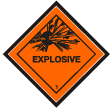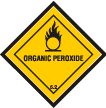Modern maritime transportation involves the shipment of more than a million chemical materials. In such a situation it is clear that the characteristics of each of the many different chemical substances must be determined and measures taken accordingly. As a result of this requirement, in 1960 the Inter-governmental Maritime Consultative Organization, known as IMCO for short, categorized the most important dangerous chemical substances in the International Maritime Dangerous Goods Code, or IMDG-C for short, which classified dangerous substances according to international standards and stated that labels measuring at least 10 cm x 10 cm should be put on all containers carrying this kind of cargo. It listed nine different classes according to the different characteristics which constituted a hazard to life and property. These are given below with their international label and code.
| CLASS 1 EXPLOSIVES Should be stored away from the crew’s quarters and the ship’s boats and immediately under the hold’s hatches. Substances included in this class: | |
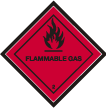 | CLASS 2 CLASS 2.1 Substances included in this class : | |
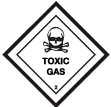 | CLASS 2.2 TOXIC GASES : Should be stored away from any source of heat, the crew’s quarters and foodstuffs. Substances included in this class : | |
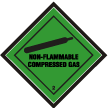 | CLASS 2.3 NON-FLAMMABLE COMPRESSED GASES : Store on or under the deck in a cool, well-ventilated place. Containers filled with this kind of gas will expand if heated and there is a high risk of an explosion. Substances included in this class : | |
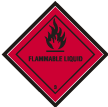 | CLASS 3 FLAMMABLE LIQUID Inflammable liquids are divided into three groups according to the temperature at which, in a vapour state, they explode when heated. CLASS 3.1 CLASS 3.2 CLASS 3.3 | |
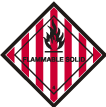 | CLASS 4 GASES CLASS 4.1 FLAMMABLE SOLID : Should be stored on top or below the deck. Should be kept away from living quarters. Substances included in this class : | |
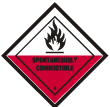 | CLASS 4.2 SPONTENOUSLY COMBUSTIBLE : Should be stored in well ventilated areas and air should be able to circulate between the stored materials. Substances included in this class : | |
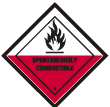 | CLASS 4.3 DANGEROUS WHEN WET : Solids which are inflammable when wet or when in contact with water. Should be stored in well ventilated, dry areas and always away from any contact with water. Substances included in this class : | |
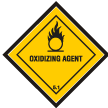 | CLASS 5 OXIDIZING SUBSTANCES CLASS 5.1 OXIDIZING AGENT : The substances in this category can create an inflammable environment when brought into contact with oxygen. For this reason they should not be stored next to combustible materials. Substances included in this class : | |
| CLASS 5.2 ORGANIC PEROXIDE : The substances in this class can be inflammable or explosive. They should be stored above deck, covered and in a dry, cool areas. Substances included in this class : | |
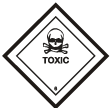 | CLASS 6 TOXIC CLASS 6.1 TOXIC SUBSTANCES : Toxic substances are those which can enter the human body through the mouth and cause death. For this reasons they should be stored away from foodstuffs, drinks, living quarters and materials which increase humidity, such as tobacco. Substances included in this class : | |
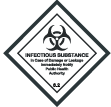 | CLASS 6.2 Substances included in this class : | |
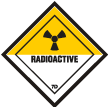 | CLASS 7 RADIOACTIVE MATERIALS : These materials should be transported in specially sealed containers. The seals must always be completely undamaged. They should preferably be stored above deck and away from living quarters, foodstuffs, unprocessed films, pharmaceuticals and chemical substances. They are divided into three groups according to their level of radioactivity. | |
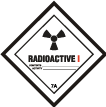 | 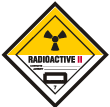 | 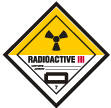 |

